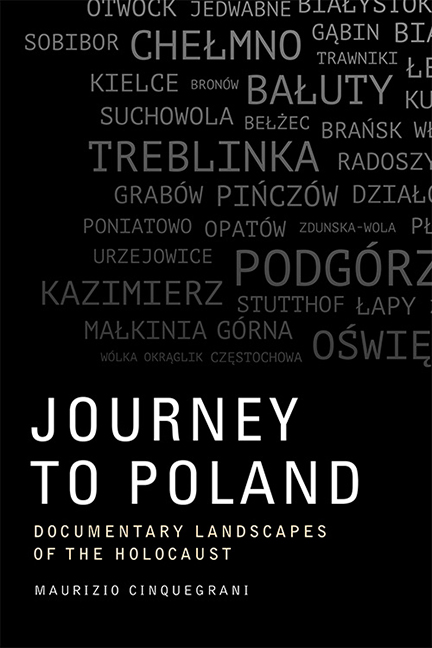Book contents
- Frontmatter
- Contents
- List of Figures
- Acknowledgements
- Dedication
- Prologue: Space, Time and the Holocaust
- 1 Countryside, Shtetl, City: The Murders of Mazovia, Jedwabne and Kielce
- 2 Conflicting Memories in the Shtetlekh Gąbin, Suchowola, Brańsk and Luboml
- 3 The Marketplaces of Postmemory in the Shtetlekh Eishyshok, Delatyn, Opatów, Zdunska Wola, Urzejowice and Pińczów
- 4 A Tale of Two Cities: Warsaw and Kraków
- 5 Another Tale of Two Cities: Lviv and Łódź
- 6 A Tale of Two Cities of Death: Treblinka and Oświęcim
- Epilogue: New Routes
- Bibliography
- Filmography
- Index
4 - A Tale of Two Cities: Warsaw and Kraków
Published online by Cambridge University Press: 10 November 2020
- Frontmatter
- Contents
- List of Figures
- Acknowledgements
- Dedication
- Prologue: Space, Time and the Holocaust
- 1 Countryside, Shtetl, City: The Murders of Mazovia, Jedwabne and Kielce
- 2 Conflicting Memories in the Shtetlekh Gąbin, Suchowola, Brańsk and Luboml
- 3 The Marketplaces of Postmemory in the Shtetlekh Eishyshok, Delatyn, Opatów, Zdunska Wola, Urzejowice and Pińczów
- 4 A Tale of Two Cities: Warsaw and Kraków
- 5 Another Tale of Two Cities: Lviv and Łódź
- 6 A Tale of Two Cities of Death: Treblinka and Oświęcim
- Epilogue: New Routes
- Bibliography
- Filmography
- Index
Summary
‘I feel a little like an archaeologist, walking through bits and pieces of the past.’
— Marian Marzynski, Return to PolandOn 1 August 1940, almost a third of the Jews of Kraków were taken to Warsaw (Gilbert, 1986: 123). This deportation was part of a large number of actions taken by the Nazis across a vast chequerboard of ghettos, labour camps and killing centres. As Shoah reveals, the complexity of the forced resettlements even saw the Jews of Oświęcim being deported from their town to labour camps and eventually taken back to Auschwitz II-Birkenau for extermination. The intricacies of the topography of the Holocaust have also affected its cinematic landscape, with particular neighbourhoods called on to play the role of other districts which were more extensively devastated during the war. This spatial interplay can be observed in two of the most successful and widely debated Holocaust dramas of the past twenty-five years and their connection to the wartime histories and memories of the cities of Warsaw and Kraków. Roman Polanski's The Pianist (2002) was filmed on location on the streets of the Polish capital city and at the Babelsberg studios in Potsdam, Germany; however, Polanski used districts of the city which survived the war and were not originally part of the Jewish ghetto. Similarly, Steven Spielberg used the topography of Kraków creatively in Schindler's List (1993), a film which was set and filmed in and around Kraków and, as we shall see, whose success had significant and multilayered implications in the memorialisation of the Holocaust in this city.
The annihilation of the Jews of Warsaw and Kraków presents common traits and considerable differences which are reflected in the documentaries filmed on these locations. Before the war, the Jewish communities of both cities were largely concentrated in two districts: Praga in Warsaw, and Kazimierz in Kraków. When the Germans occupied Warsaw and Kraków, thousands of Jews were resettled from these neighbourhoods to the ghettos established on the opposite bank of the Vistula, respectively in the Warsaw districts of Muranów, Powązki, Nowolipki, Śródmieście Północne and Mirów, and in the Kraków district of Podgórze.
- Type
- Chapter
- Information
- Journey to PolandDocumentary Landscapes of the Holocaust, pp. 82 - 113Publisher: Edinburgh University PressPrint publication year: 2018



